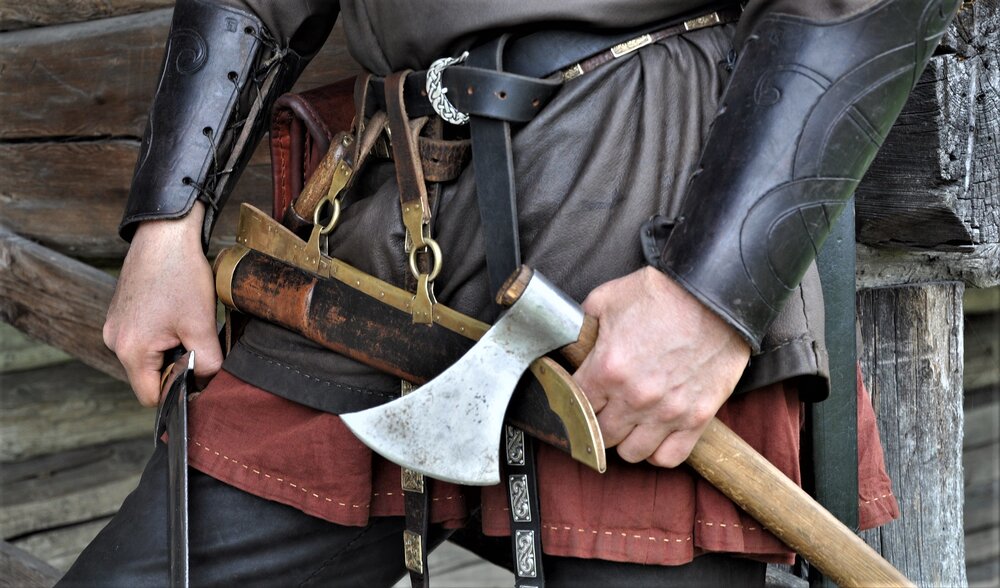
Viking battle axes have long captured the imagination of history enthusiasts and are synonymous with the fearsome warriors of the North. Let’s delve into the origins and explore the historical significance of these iconic vikingská sekera that played a crucial role in Viking warfare.
- Viking Age and Weaponry Evolution:
- The Viking Age, spanning from the late 8th to early 11th century, marked a period of intense exploration, trade, and conquest by Scandinavian seafarers known as Vikings.
- As the Vikings expanded their influence across Europe, their weaponry evolved to suit their military tactics and strategic needs.
- The Viking battle axe emerged as a prominent and favored weapon during this time, reflecting the Vikings’ prowess and adaptability in warfare.
- Design and Versatility:
- Viking battle axes were designed to be versatile and effective in combat.
- Typically featuring a single-edged, long blade mounted on a sturdy wooden haft, these axes offered a balance of power and agility.
- The lightweight design allowed for quick strikes, making them suitable for close-quarters combat, while their ability to slash, chop, and thrust made them effective in various engagements.
- This versatility granted the Vikings a strategic edge, giving them an advantage over adversaries relying on more conventional weaponry.

- Role in Viking Culture:
- Viking battle axes held deep cultural significance and were more than just instruments of war.
- They were symbols of status and bravery, often owned by esteemed warriors or chieftains.
- In Norse mythology, axes were associated with gods like Thor, further enhancing their significance in Viking culture and belief systems.
- These axes were often ornately decorated, showcasing intricate craftsmanship and acting as symbols of pride for their owners.
- Impact on Viking Warfare:
- The adoption of battle axes revolutionized Viking warfare strategies.
- These weapons allowed the Vikings to unleash devastating attacks and ambushes, striking fear into their opponents.
- Their effectiveness in naval battles and land raids contributed to the Vikings’ reputation as fierce and unstoppable warriors.
- Viking battle axes played a crucial role in shaping the course of historical battles, influencing the outcome of conflicts across Europe.
Conclusion:
The origins and historical significance of vikingská sekera are deeply intertwined with the Viking Age and their cultural identity. These versatile weapons not only showcased the Vikings’ military prowess but also served as symbols of honor and bravery. Today, Viking battle axes stand as enduring symbols of an era marked by exploration, conquest, and the forging of a legendary warrior culture.






